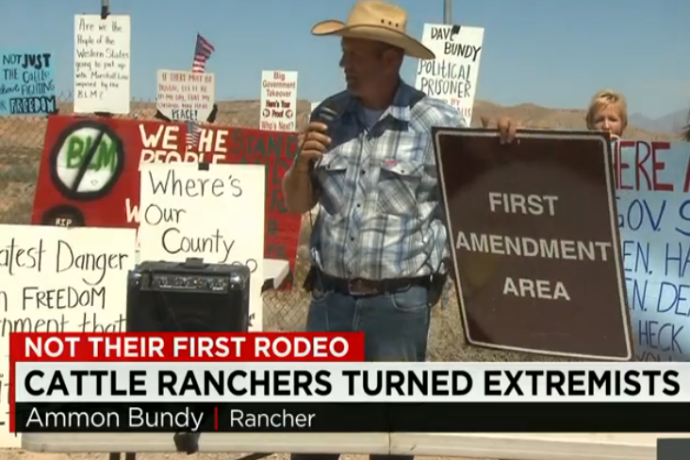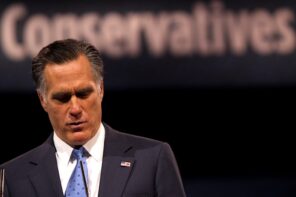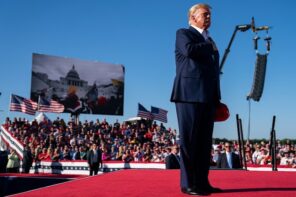By now you know that a group of armed white folks, led by the sons of Cliven Bundy, are occupying the headquarters of the Malheur National Wildlife Refuge in rural Oregon. They are laying claim to property owned by the American people, held in trust by the federal government and maintained by the Bureau of Land Management (BLM).
The group is demanding land use and water rights for local ranchers. Ammon Bundy, his brother Ryan and their supporters are rallying behind two members of the Hammond family—who have, by the way, asked them to please stop. Dwight Lincoln Hammond, Jr., 73, and Steven Dwight Hammond, 46, were indicted on federal arson charges and recently remanded to federal prison to serve mandatory minimum sentences under the 1996 federal Antiterrorism and Effective Death Penalty Act. Ammon Bundy received testimony that “the Lord was not pleased with what was happening to the Hammonds,” and called on like-minded civilians to bring guns and supplies to the Wildlife Refuge.
#NotAllMormons?
The Bundys and some of their followers are Mormons, including a “Captain Moroni” (recalling, as Jana Riess reminds us, the “military stud muffin of the Book of Mormon”). The Church of Jesus Christ of Latter-day Saints has officially condemned their efforts while maintaining that the standoff is “not a Church matter.”
Most major news outlets and current events blogs have commented on the Bundys’ Mormonism, but we should attend to how these sources are commenting. I’ve written about the ways the American public usually responds to minority religions. But that’s not what’s happening with the Oregon standoff.
There’s been much discussion of whether and why the Bundys’ actions reflect Mormon scripture, theology, symbolism and history. Many have noted the Church’s legacy of 19th century anti-federalism and violent clashes with the American government. Most sources are quick to emphasize that the Bundys are extremists—some Saints on Twitter are using a #NotAllMormons hashtag to distance themselves—and that the LDS Church is increasingly approaching the American religious mainstream.
The Bundys’ Mormonism is certainly newsworthy, but it’s a headline, not a punchline.
There’s been no discussion, however, of the ways the Bundys’ Mormonism intersects with the other major social media responses to the standoff: that is, concerns of race. Online communities have emphasized the discrepancies between FBI responses to this white militia and the militarism and violence unarmed #BlackLivesMatter protesters have faced in Missouri, Maryland, Minnesota and elsewhere.
And of course the Church, like Oregon, like America, has a checkered past in matters of racial difference. The racial conflicts surfaced by the Bundy uprising and reflected in social media are ones LDS has grappled with for more than a century.
#VanillaISIS, #YallQaeda, #YokelHaram, #Yeehawd
Islam, obviously, is not a race–but it is racialized in the United States and elsewhere. Many non-Muslim Americans expect Muslims to look a certain way (i.e. Brown), and what American politicians and news pundits call a “complaint” when white Mormons do it becomes “terrorism” for racial and religious minorities.
The hashtags #YallQaeda, #VanillaISIS and the rest have proliferated on Twitter to criticize the bland characterization of an armed occupation of a federal building as a “peaceful protest.”
But these hashtags should give us pause for two reasons. First, because white anti-government extremists, not Muslims, are the most pressing terrorist threat in the contemporary United States. Second, because they reinscribe a connection between Islam, terror and violent oppression. The latter point is where #VanillaISIS can inform our understanding of Mormonism and the Oregon standoff.
Comparisons between Mormons and Muslims date to the 19th century. In campaigns to discredit the infant Church and establish antebellum federalism, many public figures drew parallels between Mormon plural marriage and Muslim polygamy. Religious and sexual difference was supposedly evidence of barbarity, and justification for sending U.S .troops against U.S. citizens for the first time in our nation’s history.
More recently, journalists identified Fundamentalist Church of Jesus Christ of Latter-day Saints (a separate entity from LDS, though the groups share common religious ancestry) as “the American Taliban,” described Mormon fundamentalist women in “burqa-like” prairie dresses, and warned of Mormon fundamentalist oppression of women. These comparisons to Islamic extremism helped authorize the single largest protective custody seizure in American history, when Texas law enforcement and social service workers removed more than 400 children from the Yearning for Zion ranch in El Dorado, Texas.
Comparisons between Mormons and Muslims usually trade on damaging stereotypical portrayals of both groups and have led to violence against religious minorities. #VanillaISIS is hilarious, but arguably not productive if we’re invested in American religious liberty.
#WhiteTears
As I mentioned above, Black Twitter has been outraged at the discrepancy between government agencies’ responses to the Bundys’ efforts and #BlackLivesMatter protests. With good reason: #BlackLivesMatter activists are protesting America’s systematic destruction of Black bodies. Many have compared the FBI’s response to the Oregon standoff unfavorably with the Philadelphia police force’s response to the Black liberation group, MOVE. In 1985, Philadelphia police officers dropped a bomb on their own city to end a standoff with the movement.
By comparison, the Bundys’ movement is arguing that a 93 percent discount on grazing fees is insufficient while insisting that they’re facing a worse backlash than the #BlackLivesMatter folks. The Oregon occupiers argue from a privileged position than they are not experiencing enough privilege. These—literally, in the case of former Marine Jon Ritzheimer—are #WhiteTears.
The Church of Jesus Christ of Latter-day Saints has been candid about its own struggles with white supremacy. For much of the Church’s history, Black Saints could not hold the priesthood, be sealed to their spouses for eternity or participate in temple endowment. But in 1978, God changed his mind about Black people, and Church President Spencer Kimball revealed that all worthy men could be ordained. (Heavenly Father is still holding out on women, however.) LDS is among the fastest growing and most racially diverse religious organizations in the world. The Bundy family’s attitudes toward Black Americans are, in short, well out of line with contemporary mainstream Mormon attitudes.
#IStandWithTheBurnsPaiuteTribe
Finally, the Bundys find themselves in conflict with the Paiute Tribe of Burns, Oregon. In a recent press conference, tribal Chairperson Charlotte Rodrique said she is “offended by occupiers’ statements about returning the land to its rightful owners,” as the Wildlife Refuge stands on their ancestral lands. “This is still our land,” Rodrigue maintained. Archaeological evidence of the tribe extends back for 6000 years; they were removed in the late 1870s. The Refuge is part of Paiute ceremonial space.
The Bundys’ movement shares with LDS a vagueness about its relationship to American Indians. The Book of Mormon links indigenous Americans to the dark skinned Lamanites, with whom the Christian Nephites were forbidden to marry. (These implications of racial inferiority have not sat well with native folks.)
The Church seems to have no clear position on its tense relationship with American Indians; in this, LDS is not unlike the Bundys. Ammon Bundy has said that the Pauite “have rights as well” and should likewise be free from the federal government, but has been vague as to how his protest would accomplish native freedom. Tribal council member Jarvis Kennedy finds more in common with #BlackLivesMatter protestors. “We’d be already shot up, blown up or in jail…they are used to killing us.”
This is a surprisingly complex web of issues around what might, at first glance, look like sedition executed by a bunch of amateur Constitutional scholars and gun enthusiasts who forgot to pack their own snacks. (A decidedly un-Mormon oversight.) While the racial dimensions of the Bundys’ beliefs do not exhaust the group’s motives or motivations, the connections between Mormonism’s complex relationship to race may lend nuance to our own understandings of the standoff.
I am indebted to Laurie Maffly-Kipp, Benjamin Knoll, and John-Charles Duffy for their insights and contributions to this article.





